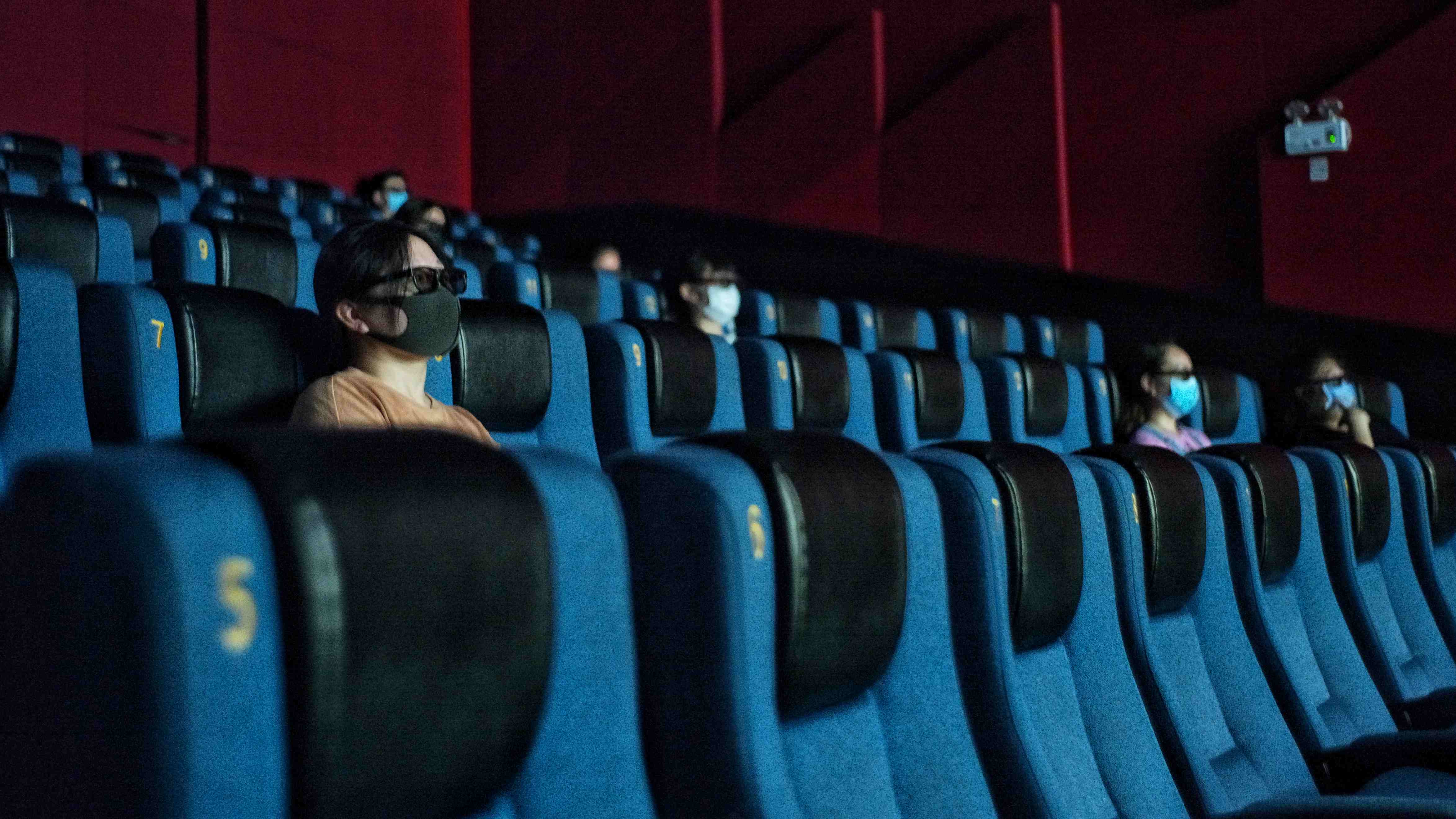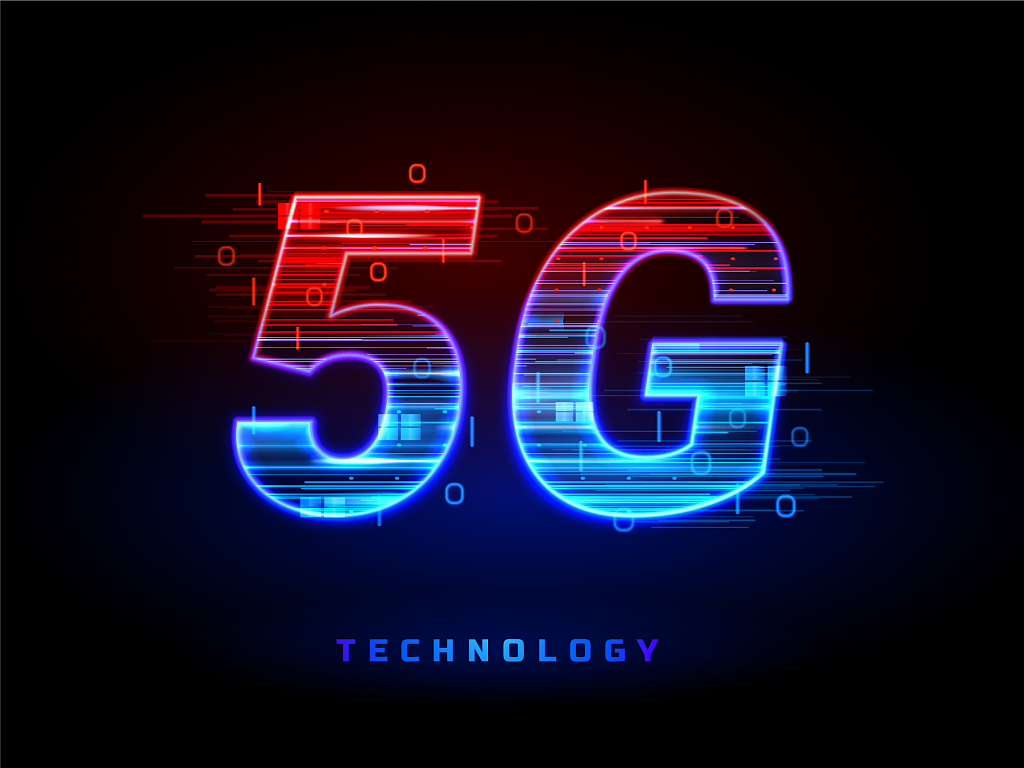
People watch a movie at the reopened Capital Cinema (Xidan branch) in Beijing, capital of China, July 24, 2020. /Xinhua
People watch a movie at the reopened Capital Cinema (Xidan branch) in Beijing, capital of China, July 24, 2020. /Xinhua
Editor's note: Yu Mengjie is a graduate from Clark University with a master's degree in communication. She works in the field of international film content distribution. The article reflects the author's opinions, and not necessarily the views of CGTN.
On August 26, there was a forum held during the 2020 Beijing International Film Festival. It discussed the development and transformation of the film industry in the 5G era, and leading figures of film companies, experts, and scholars shared their views on future trends.
It's not the first time 5G has come under the spotlight in a film forum. So why do 5G technologies matter that much to the industry?
According to film theorist and historian David Bordwell, film as art is a combination of creativity, technology, and business. Unlike other forms of art, movies depend more on technology. "From the earliest experiments in apparent motion to the most recent computer programs. It also depends on people who use that technology, who come together to make films, distribute them, and show them."
From 2D to 3D, from open-air cinemas to IMAX cinemas, from film stock to Digital Cinema Package (DCP), the upgrade of technology has revolutionized the film industry.
There is no doubt 5G technologies will bring changes and benefits from daily lifestyles to the whole society. Its influence on the film industry will be mainly reflected in three aspects: filmmaking, distribution, and the audience.
In the filmmaking phase, the operation of the intelligent devices will be more extensive, especially in the field of camera, lighting, and editing. Since 5G is designed to significantly reduce latency, the time for shooting and post-production will be greatly shortened, thus efficiency will rise dramatically.
Nowadays, many multinational post-production companies assign the same project to workers in different time zones, thus creating a 24/7, pipelined post-production model to enhance the film-making process.
The advent of 5G will further improve their efficiency, and some experts believe, in the future, shooting and post-production will be done almost simultaneously. The combination of technology and people's creativity may bring more surprises to us.
Another advantage 5G brings is that it dramatically reduces the cost of film distribution. At the beginning of 2002, the first digital cinema was built in China after more than decades of development; the number of digital screens in China has reached nearly 70 thousand (according to iiMedia), which means the digital film has completed the mission of replacing traditional film.

In this distribution revolution, DCP replaced film stock as the vehicle for movies. At present, it takes about six to eight thousand Chinese yuan to make an encrypted DCP. Cinemas with multiple halls need multiple DCPs to meet their screening needs.
By 2019, there were more than 12 thousand cinemas in the China mainland. Although each film has its own operating conditions and strategy, we still can be calculated from these data that a wide release theatrical film will spend considerable cost on DCP production. In addition, there are DCP distribution & transportation costs, labor, and travel cost needs to be taken into account.
5G technologies whatsoever will be able to realize content network transmission, which means that film images are stored in the cloud and broadcast directly to cinemas via a 5G link, thus saving all expenses resulting from DCP.
With the upgrading of film technology, broadcasting terminals, and infrastructure, the audience's movie-watching experience is also meant to be upgraded. There is no doubt that with the powerful transmission performance of 5G, the definition of the movie image will be further improved.
At the same time, the upgrade of personal terminal movie-watching equipment may also lead to the phenomenon of cinema losing its audiences. Under this situation, cinemas have to come up with more diverse operation models to attract people. But from my perspective, cinema is not only a place for watching movies, but also a social place, and it will not be easily replaced.
Another challenge posed by 5G technologies is that the tech giants will have a more concentrated voice, which may create a monopoly. However, technology is an important part of the film, but that's not all of it. Film, as a form of art, needs to touch the audience with moving stories and creative ideas. No technology will change that.
To conclude, 5G technology brings both chances and challenges. Facing such technological change, film practitioners should seize opportunities and be determined to rise to challenges.
(If you want to contribute and have specific expertise, please contact us at opinions@cgtn.com.)